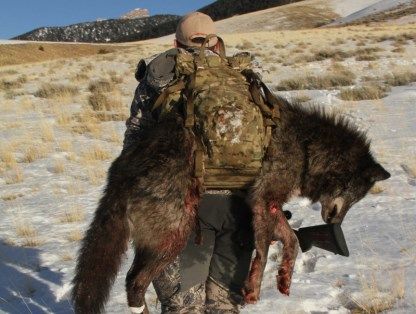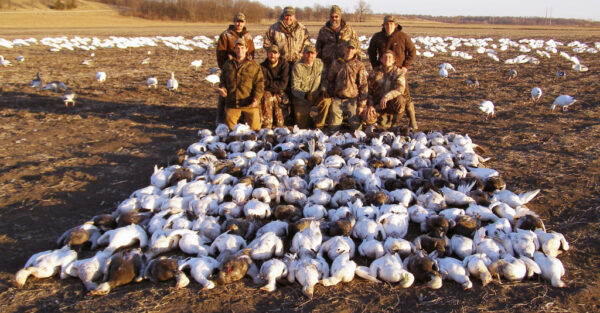Podcast: Play in new window | Download
Subscribe: RSS
We start off by talking big bucks with Roberts Ranch Outfitters Monty Roberts. The Red River bottom is slowly becoming known as a big buck hotbed, much like South Texas’ Golden Triangle & Grayson County (also along the Red River), or even Pike County Illinois. With 2,700 acres along the Red River and the Texas/Oklahoma border, Monty is no stranger to massive bodied deer with huge racks. Roberts Ranch Outfitters has diverse habitat from the river bottom, to plum thickets, hardwood bottoms and a their unique sandhills.
Monty gives us his thoughts on why the deer in this region get so big. He believes the small farming community of Davidson, Oklahoma also offers the deer plenty of peanuts and wheat fields which they venture into to feed at night. I experienced this unique big buck paradise during the Oklahoma black powder season and while big boy didn’t step out, we did harvest our first deer with our CVA Muzzleloader- a 180 LB doe! With no trophy fees, Roberts Ranch Outfitters affords every hunter the chance for that Boone & Crockett buck of a lifetime.
Then we check in with our longtime friend Randy Newberg- host of “Fresh Tracks With Randy Newberg” which airs on Sportsman Channel. A lifelong big game hunter and conservationist, Randy is on the front lines of two major issues concerning wildlife management in much of the Northwestern United States- Bison and Wolves. This season, “Fresh Tracks” aired a Yellowstone American Bison hunt after Randy successfully drew a late season tag. We talk about that experience and the controversy of bison expansion vs the cattle and ranching industry. While reintroduction has been a success, these iconic American beast used to roam the entire continent from Canada to Mexico.
We then change it up and get into perhaps the most politically charged issue the outdoor community has faced in the last 20 years- grey wolves. Randy has long been a proponent of states having the right to manage their own wolves once stable population objectives were met. It didn’t take long for wolves to make a quick recovery after their 1995 reintroduction. Sadly, the United States Fish and Wildlife Service didn’t initially keep their end of the bargain and elk, moose, & deer herds have suffered immensely. 20,000 strong in 1995, Yellowstone’s elk herd is now down to around 4,000 animals. This means less hunting tags, less revenue and ultimately less money for wildlife. For the anti hunting faction, the grey wolf is a golden goose with a seemingly never ending supply of financial contributions made on the species’ behalf.
There are now 6 states where wolves have been de-listed and are now managed by the state. Randy made history last year when he aired the first ever successful wolf hunt on a major network in the lower 48 states. He was greeted with hundreds of death threats and nasty emails from the pro wolf, anti hunting community. Randy talks about the bad blood and lack of trust between states and the USFWS. He advises New Mexico to learn from the Western states experience as Mexican Grey Wolf reintroduction is causing major friction between humans and wolves in many rural areas of the state. Randy emphasizes that conservation isn’t a species specific science and that every species needs to be managed. The wolf hunt that caused so much controversy:
Then we round out the show by talking quail with Lone Star Outdoor News Executive Editor Craig Nyhus. Texas Parks and Wildlife’s annual quail count suggests that quail numbers are even lower than last year across the board. Luckily, hunters seem to disagree as many folks are reporting seeing and hearing more quail this year than they have in recent memory. So should we hunt them this year or not? Craig and I discuss the pros and cons and talk about what the experts think.










